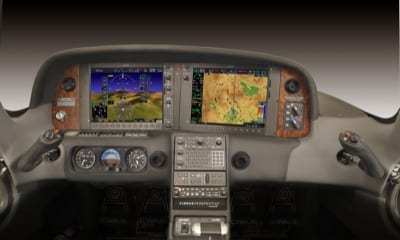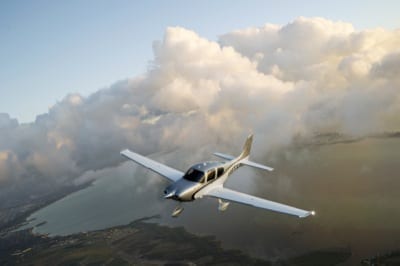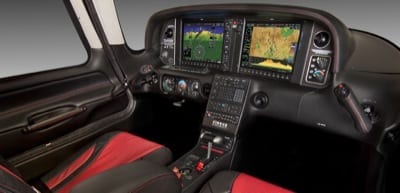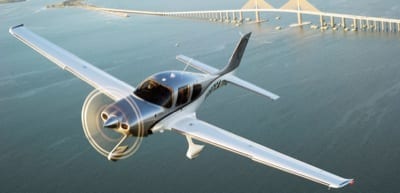I’d like to think I pondered the offer of a ride in a new Cirrus to Idaho Falls and back to Seattle for more than a few seconds, but in reality, I don’t think Cirrus Aircraft Sales Rep Ivy McIver actually finished her offer before I replied… “YES!”
Ivy grinned and said, “My Mom is flying in from Florida and will be coming as well, so as long as you don’t mind flying with my Mom, we are good to go.” “Are you kidding? I have a Mom…I love Moms.”
And with that I just weaseled my way out of a 12-plus hour car ride, and into a 2012 Cirrus SR22T, for my trip to the Trade Show Aviation Idaho.
 It’s roughly three hours by SR22T from Boeing Field in Seattle to Idaho Falls. It’s so nice to walk out of an FBO, hop in a plane and launch. No security, no long lines, no overpriced food. Just go.
It’s roughly three hours by SR22T from Boeing Field in Seattle to Idaho Falls. It’s so nice to walk out of an FBO, hop in a plane and launch. No security, no long lines, no overpriced food. Just go.
I’ll be honest, I’m not the epitome of a current pilot. Looking at two gleaming Garmin screens, named by the Cirrus marketing department Cirrus Perspective, was a bit — or a lot — overwhelming. They present a lot of information, all the time.
 As the morning weather was still burning off, McIver elected to open the instrument flight plan she’d filed to get out of Seattle and over the Cascades.
As the morning weather was still burning off, McIver elected to open the instrument flight plan she’d filed to get out of Seattle and over the Cascades.
The Cirrus, near gross weight, accelerated smartly and rotated and climbed with authority. Granted, it was a cool morning at sea-level, but a nice positive rate with good visibility is nice in crowded airspace.
As we were handed off from tower to departure to center, McIver’s finger danced on the Garmin Multi-Function Display (MFD) and control panel. To say I was behind her would be an understatement. But to be fair, McIver has about 2,500 hours, the vast majority in late-model Cirrus aircraft, so I’d expect her to be proficient.
We leveled off in cruise, McIver pulled the power back to 80% and noted all the gauges were in the green. In moments, we cleared the Cascades and canceled IFR. I disengaged the autopilot to hand fly. It’s not exactly exciting to hand fly the cruise portion of a flight, and as much as I’d like to tell you about the yanking and banking portion of the flight…there wasn’t any. Getting comfortable with the sight lines and trim takes a while, but keeping the plane plus/minus 100 feet was pretty straight forward with a quick glance down at the Primary Flight Display (PFD).
Over Boise we picked up a TCAS (traffic collision avoidance system) warning of a plane at 3 o’clock 500 feet below. Unable to spot it, I banked right to open up the view under the wing. That was my first intentional turn. Wow! The amount of travel of the side stick was minimal and the snappiness of the response was impressive. Sports car-like, if that makes sense.
 As we neared Idaho Falls, McIver engaged the autopilot so we could brief the arrival. We listened to ATIS, then she advised me the speeds (100 on downwind, 90 on base, 80 on final) I would be shooting for. Look for the far end of the runway and fly it on down.
As we neared Idaho Falls, McIver engaged the autopilot so we could brief the arrival. We listened to ATIS, then she advised me the speeds (100 on downwind, 90 on base, 80 on final) I would be shooting for. Look for the far end of the runway and fly it on down.
As luck would have it, I managed to nail the speeds and with a little assist from McIver (so as to not over flair) we greased the landing. Even Mom in the back seat commented on the nice landing. Impressing Mom (any Mom) is always a good thing.
All Cirrus taxi via differential braking as the nosewheel freely casters. No surprises there. We had arrived after three quick hours of flight time.
Lucky for me, I did nothing to upset McIver during the conference so I got to return home in the same vehicle as I’d arrived. After two morning demo flights and the tanks filled just above the tabs, we were ready to head for home. “You have an ETA for me Ivy?,” I asked. “I’d like to text my wife a time.”
“It’ll be about 3.5 hours home.” Perfect.
The message to Deb was, “Getting ready to launch. Back around 3-3:30 local”.
I taxied for takeoff. After a straight-forward run-up McIver advised a 5-second count to bring the power up, look for 70 and squeeze, “oh, and it’ll take a fair amount of right rudder.” Indeed.
Climb was at full power up to 8,500 feet. Cruise power set to 80% and then enjoy the ride. We knew it was raining in the greater Seattle area, so using the XM Weather interface on the MFD, McIver started looking at the arrival weather while we were still east of Boise. The ability to look at a graphic depiction of weather (precipitation, icing, winds and pilot reports) provides for … well, “Perspective”.
 “We’ll probably need to file [IFR] to get back over the Cascades and down into Seattle,” was McIver’s analysis.
“We’ll probably need to file [IFR] to get back over the Cascades and down into Seattle,” was McIver’s analysis.
We started seeing the results of the widespread rain in southeastern Washington. We descended to 6,500 to stay VFR, briefed the weather once again and McIver then requested an IFR clearance into Boeing. As we approached Yakima, we were cleared direct Yakima, VICTOR 4, CHINS Seven, climb and maintain 10,000.
Moments later we were at 10,000 feet and then into the clouds. We wouldn’t see the ground again until we were about five miles out from Boeing at 2,000 feet.
Just before entering IMC, pitot heat and anti-ice systems came on. Outside air temperature ranged between 0° and -2° centigrade. I marveled at the terrain below via the synthetic vision (SVT) on the PFD. Mt. Rainier, which sticks up more than 14,000 feet, was nowhere to be seen on the screen (a good thing). I told McIver and Mom about the time my Dad was heading east years ago in our Piper Comanche. He’d picked up an instrument clearance, even though it was severe clear. Center vectored him out of the area, but aimed him right at Mt. Rainier. Being a bit mischievous, he decided to see how long they’d let him go. When the mountain filled the windscreen he called center to see if they had another heading for him. Needless to say, center gave him an expedited turn. The Perspective’s SVT cuts the clouds to give the pilot a view outside, even when there isn’t one. What a boon to safety.
 As center brought us down, vectoring us for the ILS, McIver dialed in the necessary navaids. “The localizer is coming alive, and you can see the HITS (Highway-In-The-Sky) boxes on the PFD, which will guide us to runway 13R,” said McIver. We let the autopilot fly the approach down to minimums and then McIver took over and landed.
As center brought us down, vectoring us for the ILS, McIver dialed in the necessary navaids. “The localizer is coming alive, and you can see the HITS (Highway-In-The-Sky) boxes on the PFD, which will guide us to runway 13R,” said McIver. We let the autopilot fly the approach down to minimums and then McIver took over and landed.
For the record, my landing in Idaho Falls was better than hers at Boeing.
I pulled my phone out to text Deb. She’d already sent me a message saying she’d be late. “Traffic thru Tacoma.” I replied, “We are here,” at 3:30.
Moments later, so was Deb.
As I think back to learning instrument flying in the late 1980s and early 1990s, I wish we could’ve had a cockpit like this. While there is a lot to process, mentally, the ability to be situationally aware is made far easier with this sophistication.
Bravo to Cirrus Aircraft for bringing such a marvelous aircraft to market.
For more information: CirrusAircraft.com
People who read this article also read articles on airparks, airshow, airshows, avgas, aviation fuel, aviation news, aircraft owner, avionics, buy a plane, FAA, fly-in, flying, general aviation, learn to fly, pilots, Light-Sport Aircraft, LSA, and Sport Pilot.
